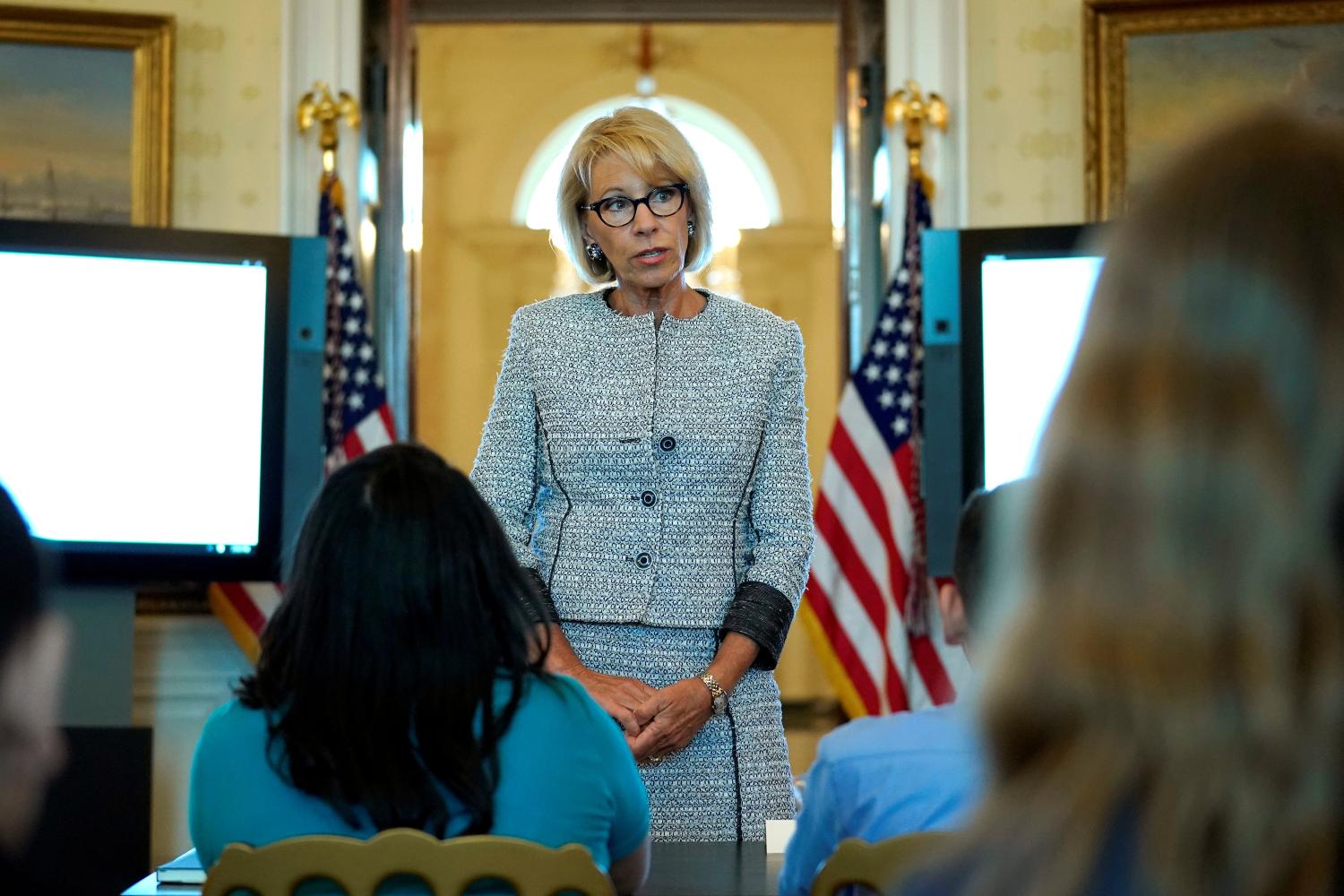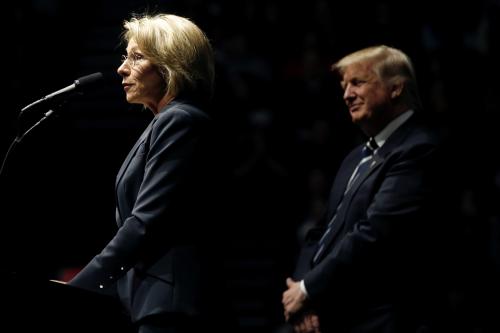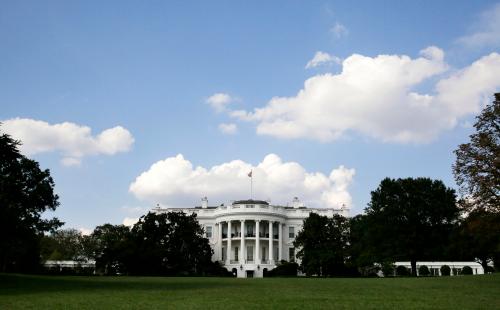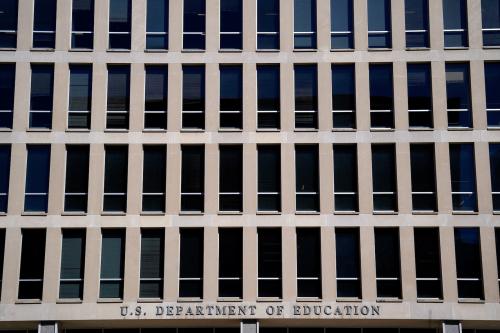This post originally appeared in The Hechinger Report; the version below has been lightly edited for style and content.
When Secretary of Education Betsy DeVos put out the department’s 2019 budget, Democrats who support charter schools found themselves in an awkward political situation. DeVos proposed cutting $17.6 million that the Department of Education had allocated for the Special Olympics, but she somehow found room in the budget to increase charter school funding by $60 million. DeVos’s proposed cuts signaled that the government doesn’t care about students with disabilities. The funding for the Special Olympics was restored in the administration’s budget after an intense backlash.
Charters earned a reputation for enrolling fewer students with disabilities than traditional schools and are already blamed by many for “siphoning” funds from their district counterparts. DeVos has all but confirmed those suspicions. Charters can’t be a centerpiece issue for Democrats running for public office if the schools’ biggest champion sees fit to make athletes with disabilities the sacrificial lambs of a leaner budget. Democrats must instead focus on issues that affect all schools, teachers, and students, regardless of school type—issues such as teacher diversity.
After the 2018 midterm elections, the 116th Congress looks radically different, with the most women in a single class, the first Muslim women, and the first Native American women. On the other side of the aisle, Republicans, whiter and more male, are looking less and less like America. The party of diversity must promote it in a new era of education reform. Political hopefuls should offer policy solutions to two divergent statistics: The percentage of students of color in public elementary and high schools is increasing, but the proportion of millennials of color entering the teaching profession is lessening. Young people of color aren’t going into teaching.
New research out of the Brookings Institution from my fellow researchers Michael Hansen and Diana Quintero shows that people of color are the most underrepresented among teachers of the millennial generation. “On average, the share of white teachers in the overall workforce is more than 10 percentage points larger than the share of whites among non-teaching college-educated workers” the report states. “For Generation X and baby boomers, this difference is 7 and 3 percentage points, respectively.”
Stanford University researcher Thomas Dee found in 2004 that black students of both sexes who had a black teacher scored 3 to 6 percentile points higher on standardized tests in reading than those taught by a teacher of a different race. Dee found a similar increase in math scores when black students were taught by a black teacher. In a 2017 study published by the Institute of Labor Economics, researchers showed that low-income, black male elementary school students who were paired with a black teacher in the third, fourth or fifth grades were 39 percent less likely to drop out of high school. The researchers also found that matching low-income black students of both sexes with at least one black teacher between the third and fifth grade increased students’ aspirations to attend a four-year college by 19 percent.
In addition to academic gains, black students who have black teachers exhibit better behavioral outcomes. According to 2015 research by Adam C. Wright, now a professor of economics at Western Washington University, behavioral assessments of black students in the classroom improve significantly when they have a black teacher rather than a white teacher. Wright found the probability black students will be suspended decreases as the number of black teachers in their classrooms increases. In 2017, Wright co-authored another study that shows that students of color placed with a teacher of color were less likely to argue or act out as compared to minority students with white teachers.
In places where the percentage of charters has boomed, like New Orleans, Washington, D.C., and Newark, New Jersey, the percentage of teachers of color dropped as a result, revealing the trade-offs in diversity that many charter school proponents were willing to accept. Dems should instead rally behind policies that explicitly aim to improve work conditions that help retain teachers of color.
Doubling the proportion of teachers of color is a reform goal that Democratic presidential candidates for the 2020 election can fight for. Democrats who try to re-embrace former ideas for educational reform, like school choice and vouchers (which have largely been transformed and co-opted by Republicans), will find this embrace costly. In order to unify the party’s base around education, Democrats need to rally behind reforms that embrace all teachers.
In the great big Democratic state of California, Los Angeles Mayor Antonio Villaraigosa, backed by reform advocates who favored charter schools, lost his bid in 2018 to become governor, and saw teachers in his city strike, in part to protest against the expansion of charter schools under his watch. These days, being seen as putting in check school reforms that involve charters or vouchers is more politically lucrative.
Linda Darling-Hammond, a charter opponent whom no one would describe as being warm to reform, was recently tapped by Gov. Gavin Newsom to become the president of California’s state Board of Education. Earlier this year, Wisconsin’s Tony Evers, who in 2018 ousted education reform and Republican darling Scott Walker from the governor’s mansion, called for a freeze on school choice programs and charter schools. In 2018, Democrats in Connecticut elected Ned Lamont as governor. Lamont backtracked on his earlier support of charter schools, claiming during the campaign that they drain funding from traditional school districts. Most recently, the newly elected mayor of Chicago, Lori Lightfoot—the first black woman and first lesbian to be mayor of that city—won on an agenda that included freezing the number of charter schools in the city.
The pushback against charters by politicians is not brand new. In 2014, in a gathering of philanthropists in the lead-up to Hilary Clinton’s presidential bid, the candidate’s husband, Bill Clinton, made a pre-emptive strike when he said that charter schools have not held up their “original bargain.” Pro-reform candidate Clinton tried to gracefully back away from charter schools during her 2016 campaign, and subsequently said at a Congressional Black Caucus event in South Carolina, “Most charter schools … don’t take the hardest-to-teach kids. And if they do, they don’t keep them.”
Nonetheless, there’s still a need for radical change and improvement in education that candidates just aren’t paying as much attention to. Education does need reform—just not the brand that has proven to be a political liability. Disempowering teachers unions, which some Democratic reformers have pressed through litigation, doesn’t jibe with getting a Democrat elected. Other key elements of reform in recent years, such as test-based accountability for schools and teachers, as well as voucher programs, have not proved persuasive in a Democratic election platform. Democrats must address problems that are aligned with the principles of their party. For instance, increasing teacher pay will get the attention of teachers who have taken to the picket lines to demand better work conditions.
As a former charter leader in New Orleans myself, I’ve seen black and brown communities have to make trade-offs like losing political control, teaching positions, and funding in the name of educational reform. If people of color don’t realize direct economic, political, and educational benefits, then it’s not real reform. Consequently, we need reforms that empower people, districts, and students on the way to educational progress—and hiring and retaining people of color should be an explicit focus of reform.
The Brookings Institution is committed to quality, independence, and impact.
We are supported by a diverse array of funders. In line with our values and policies, each Brookings publication represents the sole views of its author(s).








